
Umweltschutz am Standort Hamburg
Nur etwa vier Kilometer Luftlinie vom Hamburger Rathaus entfernt, auf der Elbinsel Peute, befinden sich der größte Produktionsstandort der Aurubis AG und die Konzernzentrale auf einem ca. 870.000 m2 großen Gelände.
Der Standort Hamburg der Aurubis AG ist eine der modernsten Primär- und Sekundärkupferhütten weltweit. Aus Kupfererzen, Recyclingmaterialien wie Schrotten und verschiedenen anderen komplexen Werkstoffen werden jährlich etwa 400.000 t reines Kupfer erzeugt. Im Rahmen der Multi-Metall-Gewinnung werden zusätzlich weitere Metalle wie Edelmetalle, Nickel, Blei und Zink sowie Eisensilikat-Produkte und Schwefelsäure gewonnen.
Die Herstellung von Metallen inmitten einer Großstadt ist nicht trivial, aber Aurubis hat sich zu einer umweltgerechten Kupfer- und Multimetallproduktion unter diesen herausfordernden Rahmenbedingungen verpflichtet. Das erfordert Anstrengungen, die über das gesetzliche Maß hinausgehen, denn der Schutz der Umwelt und der Gesundheit von Nachbarn und Mitarbeitern ist die Basis für die Standortsicherung. Wir müssen und wollen die Wachstumsziele der Stadt mit der nachhaltigen Betriebsentwicklung von Aurubis am Standort Hamburg kombinieren. So wird durch den Einsatz innovativer, leistungsfähiger Technik und gefördert durch ein hohes Umweltbewusstsein der Mitarbeiter vorbildliches im Umweltschutz geleistet und an einer kontinuierlichen Verbesserung gearbeitet.
Umsetzung und Überwachung aller geltenden Umweltanforderungen werden am Standort Hamburg durch die Abteilung Umweltschutz wahrgenommen. Die Anforderungen ergeben sich aus den relevanten Gesetzen, wie dem Bundes-Immissionsschutzgesetz (BImSchG), dem Kreislaufwirtschaftsgesetz (KrWG), Wasserhaushaltgesetz (WHG), aus Auflagen der Anlagengenehmigungen, aus Konzernvorgaben sowie freiwillig vereinbarten Verbesserungsmaßnahmen, etwa im Rahmen der Partnerschaft für Luftgüte und schadstoffarme Mobilität.
Als Instrument zur Überwachung des rechtskonformen Betriebes und Unterstützung einer kontinuierlichen Verbesserung betreiben wir ein Umweltmanagementsystem nach DIN ISO 14001 und EMAS, welches durch eine akkreditierte Stelle jährlich überwacht und alle drei Jahre zertifiziert wird. Das Umweltmanagementsystem ist seit 2017 Teil eines übergeordneten Integrierten Managementsystems (IMS). Dieses beinhaltet weiterhin die Managementsysteme für Qualität (DIN ISO 9001), Energie (DIN ISO 50001) und Arbeitsschutz (DIN ISO 45001).
Zur Überwachung des rechtskonformen Anlagenbetriebs werden im Rahmen des Umweltmonitorings umfangreiche Messungen gemäß geltendem technischem Standard durchgeführt. Aufgrund der hohen Messdichte ergeben sich bis zu 10.000 Einzelanalysen im Luft- sowie 7.000 im Wasserbereich. Hinzu kommen Lärm- und Schwingungsmessungen. Die Eigenüberwachung wird kontinuierlich weiterentwickelt. Dabei spielen automatisierte Messverfahren eine wichtige Rolle, um die Datendichte beim Umweltmonitoring im Sinne einer bestmöglichen Vorsorge weiter zu erhöhen.
Die praktische Überprüfung des ordnungsgemäßen Betriebs erfolgt durch regelmäßige Kontrollgänge und Audits in den Produktionsbetrieben. Schulungen von jährlich etwa 1000 Mitarbeitern zu aktuellen Themen fördern Verständnis und Aufmerksamkeit für Umweltbelange im Arbeitsalltag. Moderne digitale Lernmethoden steigern dabei die Lerneffizienz. Die Leitungsfunktionen der Produktionsbetriebe werden zu neuen rechtlichen Entwicklungen im Umweltbereich in gesonderten Informationsveranstaltungen auf dem Laufenden gehalten.
Als wichtigste Umweltaspekte am Standort Hamburg wurden die Vermeidung diffuser Staubemissionen und der Gewässerschutz identifiziert. Darüber hinaus sind auch weitere Themen wie die Vermeidung von Abfällen, die Erhöhung der Recyclingquote oder auch die Förderung von Biodiversität und schadstoffarmer Mobilität von Bedeutung. Aus der Bedeutsamkeit der Umweltaspekte werden Maßnahmen zu deren Verbesserung abgeleitet und umgesetzt.
Detaillierte Umweltinformationen zum Standort Hamburg finden Sie in der aktuellen Umwelterklärung.
Umweltschutz Hamburg - Daten & Fakten
Während Anfang der 1990er Jahre große Verbesserungen durch Errichtung und Betrieb von Filteranlagen vor den Essen erzielt wurden, sind weitere Verbesserungen heutzutage nur noch schwerer zu erzielen. So sollen die diffusen Staubemissionen zum Beispiel durch den Einsatz neu entwickelter Filtermedien, oder die Absaugung und Filterung von Dachöffnungen auch in Zukunft weiter gesenkt werden.
Seit dem Jahr 2000 konnten die Staubemissionen des Standortes sowohl spezifisch (- 56 g/t produziertes Kupfer pro Jahr) als auch absolut (-32 t pro Jahr) verringert werden. Die mit der Freien- und Hansestadt Hamburg freiwillig geschlossenen Emissionsminderungsvereinbarungen wurden stets erfüllt.
Unsere Anlagen werden bereits mit den besten verfügbaren Abgasreinigungstechniken betrieben. Es verbleibt jedoch ein geringes Restemissionsniveau, das hauptsächlich durch diffuse Emissionen bestimmt wird. In vielen Fällen sind geeignete Minderungssysteme weder erprobt noch mit der erforderlichen Effizienz auf dem Markt verfügbar. Trotz dieser Herausforderungen plant Aurubis, insbesondere diffuse Staubemissionen auch in Zukunft durch geeignete Lösungen weiter zu reduzieren, zum Beispiel durch die effiziente und bedarfsgesteuerte Absaugung und Reinigung von Abluft aus Dachreitern oder durch den Einsatz neu entwickelter Filtermedien.
Wir haben am Standort Hamburg 100 Mio. € in Maßnahmen zur weiteren Emissionsminderung in der Primärhütte investiert. Die Maßnahmen erstreckten sich von optimierten Quellenabsaugungen über ein neu installiertes Verfahren zur Aufbereitung von Zwischenprodukten bis hin zum Einsatz modernster Absaug- und Filtertechnik zur Erfassung von staubförmigen Restemissionen. Weitere Schritte zur weiteren Reduktion von diffusen Emissionen der Primärhütte sollen zu einer Emissionsminderung von 80 % führen. All das zahlt auf unsere Nachhaltigkeitsstrategie ein – und macht den Standort langfristig zukunftssicher.
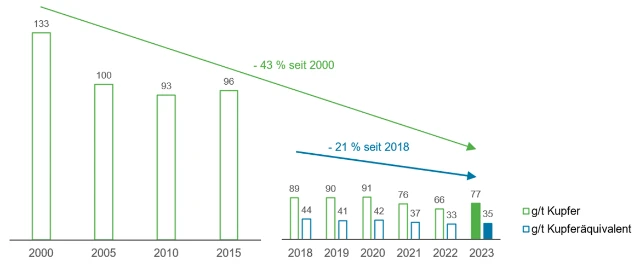
Staubemissionen in g/t erzeugten Kupfers und in g/t Kupferäquivalent
Durch Optimierungen der betriebseigenen Abwasserbehandlungsanlage konnten die Metallemissionen in Gewässer seit 2000, unter Berücksichtigung der normalen Schwankungsbreite, pro t erzeugten Kupfers um etwa 35 % und absolut um etwa 40 % gesenkt werden. Weitere Verbesserungen, u.a. durch Erhöhung der Verweilzeiten und verbesserte Fällung der Metalle sind geplant.
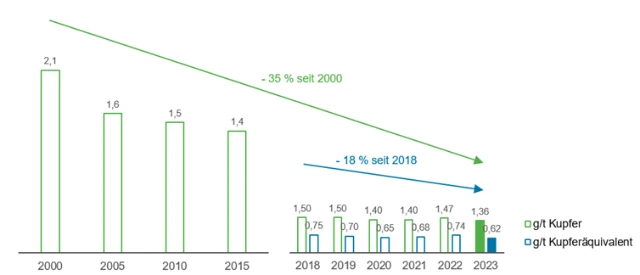
Metallemissionen in g/t erzeugten Kupfers und in g/t Kupferäquivalent
Durch den sparsamen Einsatz von Rohstoffen und Energie praktizieren wir verantwortliches Handeln gegenüber zukünftigen Generationen. Bei langfristiger Betrachtung konnte der spezifische Energieverbrauch am Produktionsstandort Hamburg in den letzten Jahrzehnten deutlich reduziert werden; im Vergleich zum Jahr 1990 um 45 %.
Je mehr Maßnahmen im Bereich der Energieeffizienz in der Vergangenheit umgesetzt worden sind, desto herausfordernder ist eine weitere Optimierung. Heute lassen sich bei mindestens gleichbleibend hohen Investitionen nur vergleichsweise geringe Verbesserungen innerhalb der Werksgrenzen erzielen, weil der Senkung des Energieverbrauchs und der Emissionsminderung technologische Grenzen gesetzt sind. So erfordert der Einsatz von komplexen Recyclingrohstoffen mit vergleichsweise geringem Metallgehalt und von komplexen Erzkonzentraten einen höheren Energieeinsatz für die Verarbeitung. Daher setzen wir neben der weiteren Effizienzsteigerung auch auf Lösungen, die außerhalb unseres Werkes Energie und damit CO2 einsparen – wie z. B. das Industriewärmeprojekt Hamburg mit einem Gesamtpotential von bis zu 140.000 t CO2 pro Jahr. Darüber hinaus ziehen wir vermehrt Maßnahmen in Betracht, um fossile Energieträger durch Alternativen zu ersetzen wie z. B. die Inbetriebnahme der 10 MW Power-to-Steam Anlage. Eine 100-prozentige Stromversorgung durch erneuerbare Energien vorausgesetzt, könnten allein durch diese Anlage rund 4.000 t CO2 jährlich eingespart werden. Bei Investitionsentscheidungen wird zudem auch zunehmend Wert auf die Senkung der Klimagasemissionen gelegt.
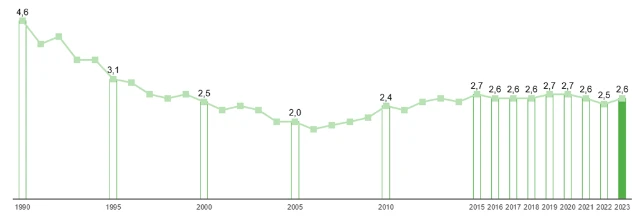
Energieverbrauch am Standort Hamburg in MWh/t erzeugten Kupfers
Zentrale wichtige Umweltziele und -maßnahmen
1. Reduktion Diffuser Emissionen (RDE) in der Primärkupfererzeugung
- Nach vollständiger Umsetzung aller Maßnahmen können die diffusen Emissionen der Primärkupfererzeugung um 80 % verringert werden. Die erste Umsetzungsphase wurde erfolgreich implementiert. Die zweite Umsetzungsphase befindet sich in der Umsetzungsplanung.
- Stufenweise Fertigstellung 2020-2025
2. Weitere Reduktion diffuser Emissionen in der Sekundärkupfererzeugung durch
- Optimierung der Phasentrennung und Reduktion der freiliegenden Schüttgutbeständen
- Fertiggestellt Ende 2023
1. Auskopplung von industrieller und nicht mit fossilen Brennstoffen erzeugter Abwärme bis 38 MW aus der Schwefelsäureproduktionsline 2 und 3 und Einspeisung in das vorhandene städtische Übertragungsnetz.
- Diese zweite Stufe des 2018 gestarteten Industriewärmeprojekts kann zusätzlich mehr als 100.000 t/a CO2 einsparen.
- Fertiggestellt: 2024
2. Reduktion von CO2-Emissionen durch diverse Maßnahmen:
- Erdgasreduzierung im Bereich Anodengießmaschine und Rinnen und an der Mittellanze SSO
- Einbau effizienter Pumpen und Gebläse, überwiegend mit Drehzahlregelung
- Reduktion von Druckluftverluste in der Sekundärkupferproduktion, Neubau effizienter Drucklufterzeugungsanlagen
- Ersatz von Kalkstein durch Hochofenschlacke als Zuschlagstoff bei der Sekundärkupfererzeugung
- Errichtung neuer Anodenöfen, speziell ausgelegt zum zukünftigen Einsatz von Wasserstoff als Reduktionsmittel (Ersparnis 6.000 t/a CO2)
- LED-Beleuchtungen
- Umgesetzt in 2023 und 2024
1. Weitere Verminderung der Abwassermenge im Bereich der Säureproduktion.
- Neben der bereits umgesetzten Reduzierung des Kühlwasserbedarfs durch die Auskopplung der industriellen Abwärme ist eine weitere Optimierung der Kühlprozesse geplant. Dabei soll die Abstoßmenge der vorhandenen Kühltürme um 500.000 m³/a verringert und damit auch der notwendige Konditionierbedarf der Kühlkreisläufe reduziert werden.
- Inbetriebnahme: 2024
2. Reduzierung von Metallemissionen
- Reduktion von Metallfrachten durch diverse Optimierungen in Regelkreisen
- Umgesetzt in 2023
Wir sehen keinen Widerspruch zwischen Naturschutz und Industrieproduktion. Wo immer möglich versuchen wir neben der notwendigen Weiterentwicklung des Werks auch bei der Förderung von städtischer Biodiversität zu unterstützen.
Gemeinsam mit der Umweltbehörde und dem NABU wurden auch in 2024 im Rahmen des Netzwerks UnternehmensNatur Maßnahmen abgestimmt, die dem wichtigen Natur- und Artenschutz in Hamburg helfen.
Im Rahmen einer Bestandsaufnahme wurden weitere Maßnahmen zur Förderung der städtischen Biodiversität abgestimmt, mit dem Schwerpunkt, die Ziele zur Förderung der städtischen Diversität mit den Projekten zu Werksentwicklung und Transformation im beiderseitigen Fortschritt bestmöglich zu vereinbaren.
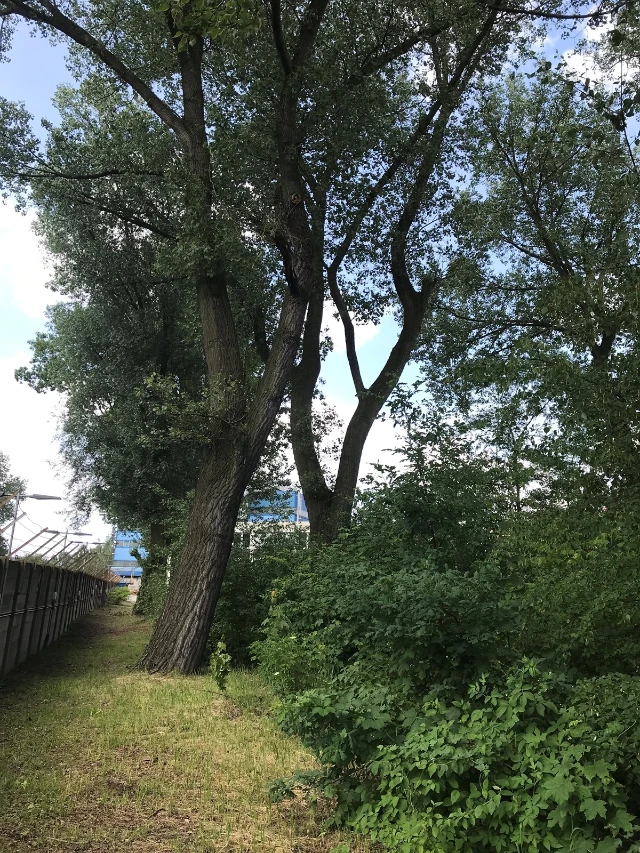
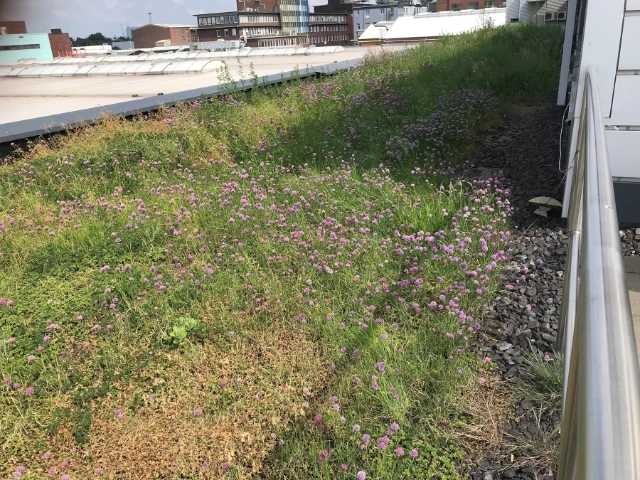
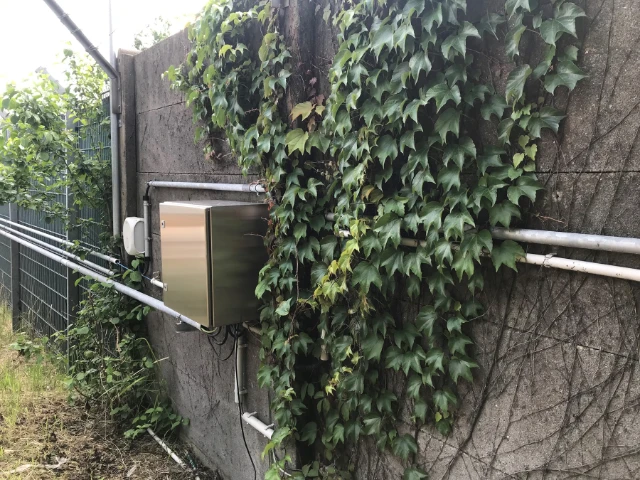
Bestimmte Freiflächen auf dem Gelände bieten Möglichkeiten, um Lebensräume insbesondere für Insekten und Vögel zu entwickeln. Ergänzende Begrünungen an den Säumen und Randstreifen mit heimischen Pflanzen können die Artenvielfalt erhöhen. Wenn möglich werden sonnige Stellen als offene Blühflächen als Wildblumenwiese geschaffen und mit entsprechend extensiver Pflege erhalten. Diese sind für Insekten wie Wildbienen, Hummeln, Schwebfliegen und Schmetterlinge wichtige Trittsteinbiotope.
Vertikalbepflanzungen und Gründächer bleiben wichtige Optionen, um die begrenzten Flächen optimal zu nutzen.
Ein Schwerpunkt bleibt der Erhalt des Wanderfalkenreviers in unserem Werk. Auch in 2024 haben wir uns über 3-fachen Nachwuchs gefreut.
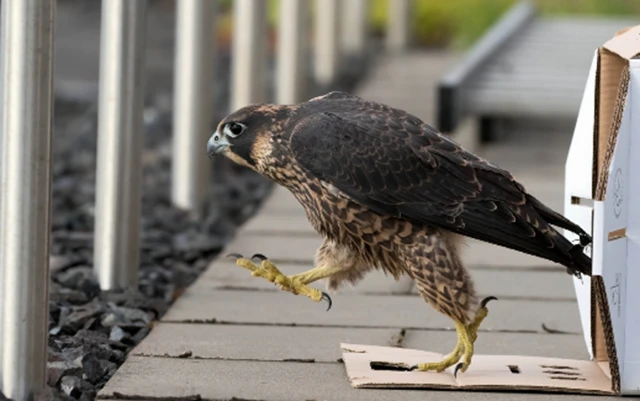
Wanderfalke bei Freilassen nach kurzer tierärztlicher Behandlung nach einem Flugunfall
Meilensteine im Umweltschutz am Standort Hamburg
Weitere technische Änderungen an den Säurekühlern der Kontaktanlage, Strang II und III. Investitionen von ca. 100 Mio. €. Die Nutzung der Abwärme in einer Höhe von 40 MW bedeutet eine CO2-freie Versorgung von bis zu 20.000 Hamburger Haushalten mit Fernwärme zur Gebäudeheizung und einer CO2-Einsparung von ca. 100.000 t/a. Damit erhöht das Projekt wesentlich die Energieeffizienz des Standorts und trägt maßgeblich zu den Klimaschutzzielen der Freien und Hansestadt Hamburg bei.
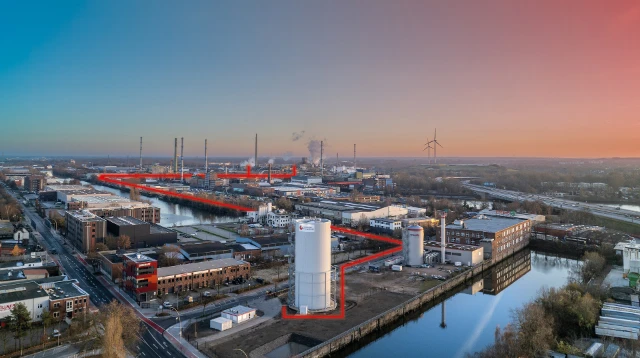
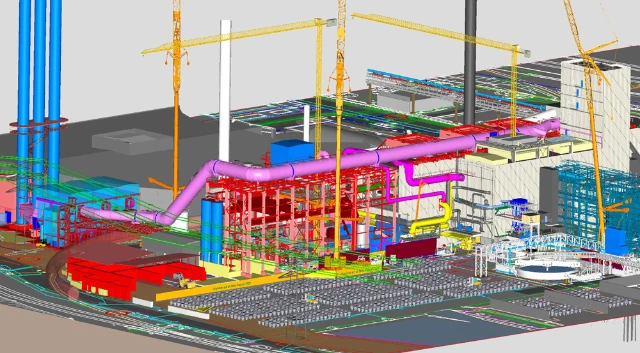
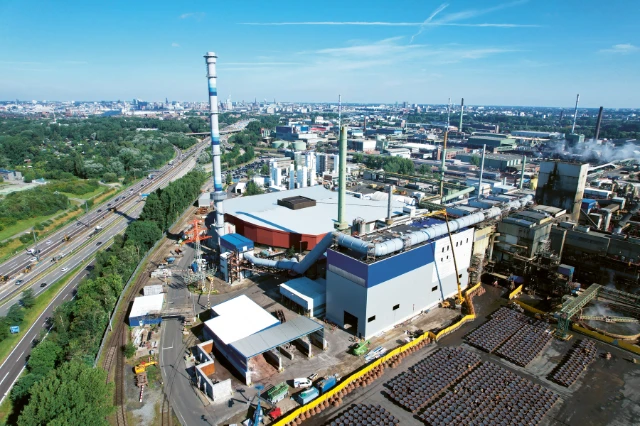
Reduzierung diffuser Emissionen im Bereich der Primärkupfererzeugung: Stufenweise Umsetzung von Maßnahmen zur weiteren Minderung staubförmiger diffuser Emissionen aus der Primärkupfererzeugung. Das Gesamtprojekt beinhaltet neben Effizienzsteigerungen bei vorhandenen quellennahen Erfassungssystemen auch Maßnahmen zur Optimierung der Hallenströmungsverhältnisse und der Errichtung neuer Aggregate zur emissionsarmen Behandlung interner Zwischenprodukte. Zusätzlich wird die stufenweise Installation einer rein bedarfsabhängig gesteuerten Erfassung und Reinigung von Restemissionen am Dach ein wichtiger Bestandteil des innovativen Konzepts. Die Dachabsaugung ist so konzipiert, dass sie stufenweise erweitert werden kann. Durch das an den jeweils vorliegenden tatsächlichen Bedarf angepasste Steuerungskonzept wird darüber hinaus eine hohe Energieeffizienz erreicht. Mit der Maßnahme wird eine Minderung der diffusen Emissionen aus der Primärkupfererzeugung um ca. 80 % erwartet – auch im globalen Maßstab ein Vorbild für eine saubere Produktion. Das Projekt wurde im Jahr 2020 gestartet. Schrittweise Umsetzung, erster Schritt 2022 abgeschlossen. Investition: 100 Millionen Euro. Die zweite Umsetzungsphase befindet sich in der Umsetzungsplanung.
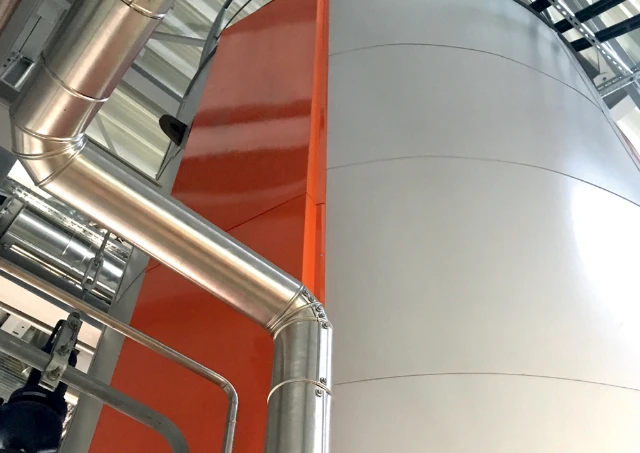
Der 10-MW-Elektrodenheizkessel erzeugt Dampf insbesondere zu Zeiten überschüssigen Stroms aus erneuerbaren Energien. Damit wird ein Beitrag zur Netzstabilisierung geleistet. In den Betriebsphasen des Elektrodendampfkessels kann herkömmlich mit Erdgas erzeugter Prozessdampf substituiert werden. Dadurch ergibt sich ein jährliches CO2-Einsparpotenzial in Höhe von 4.000 t/a.
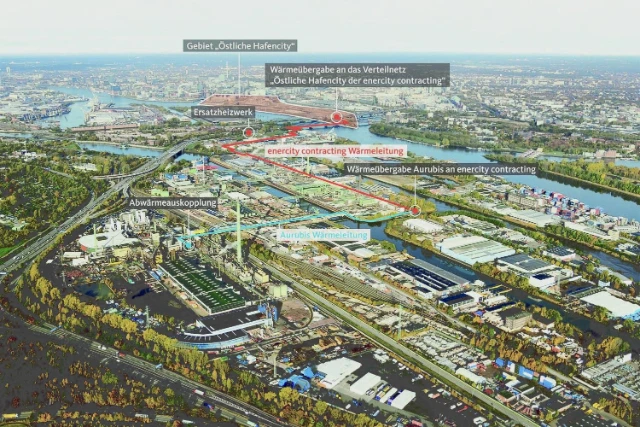
Technische Änderungen an den Säurekühlern der Kontaktanlage, Strang I. Anhebung des Temperaturniveaus zur Ermöglichung einer Auskopplung von Fernwärme und Bau einer Fernwärmeleitung bis zur Werksgrenze zur Versorgung der Hafencity Ost. Vermeidung der Einleitung von jährlich 12 Mio m³ Kühlwasser in die Elbe. Investitionen von ca. 22 Mio €
Ersatz der alten Nassgaswäsche an der Konzentrat-Trockentrommel der Rohhütte Werk Ost durch eine moderne Trockenfilteranlage • Reduzierung der Unfallgefahr durch verbesserte Ergonomie • Reduzierung der Staubemissionen um 75 % • Reduzierung der SO2-Emissionen um 85 %
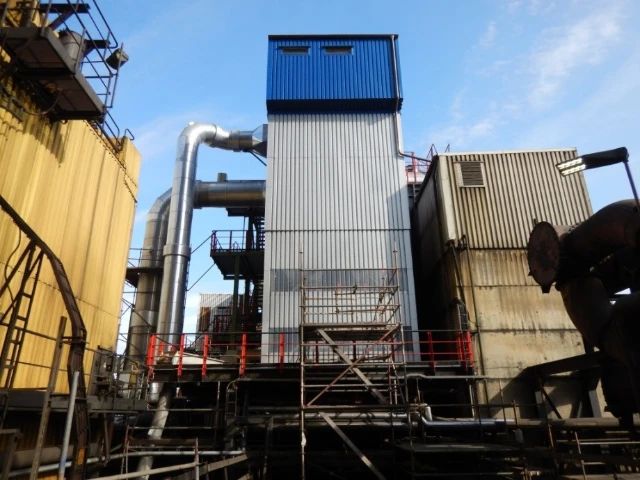
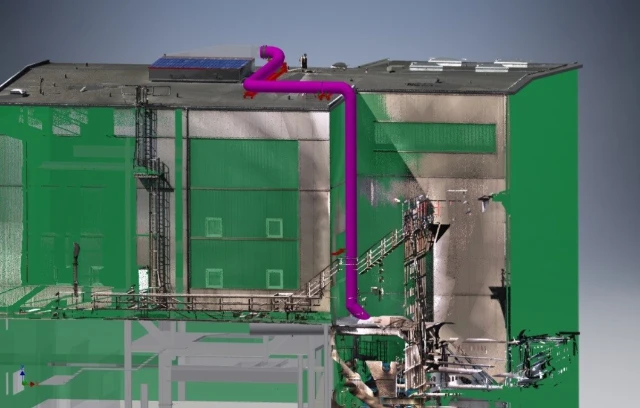
Installation einer Absaugung von 60.000 m³/h auf dem Gebäude des Elektro-Ofens der Sekundärhütte. Filterung der Abluft über vorhandene Filteranlage.
Inbetriebnahme einer Dampfturbine zur Stromerzeugung. Die vormals ungenutzte Druckstufe zwischen 60 und 20 bar wird mit Hilfe eines Überhitzers nutzbar gemacht. Damit Einsparung von etwa 5.000 t CO2 pro Jahr.
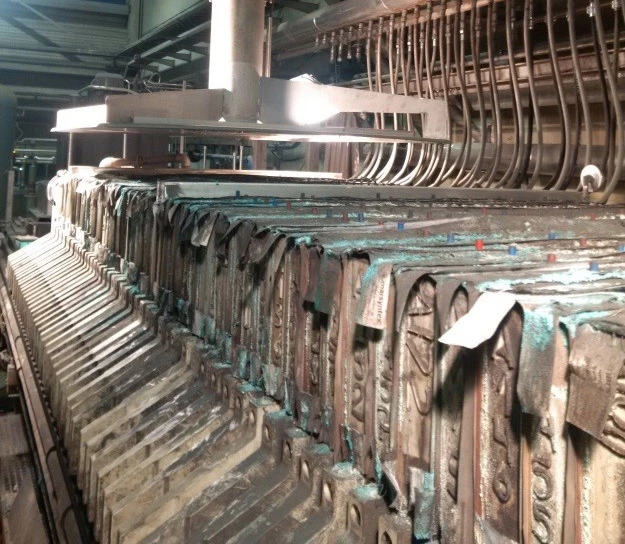
Inbetriebnahme einer neuartigen, dampfbeheizten Anodenschlammpresse inklusive verschiebbarer Absaughaube zur vollständigen Erfassung der thermik-induzierten Emissionen oberhalb der Presse.
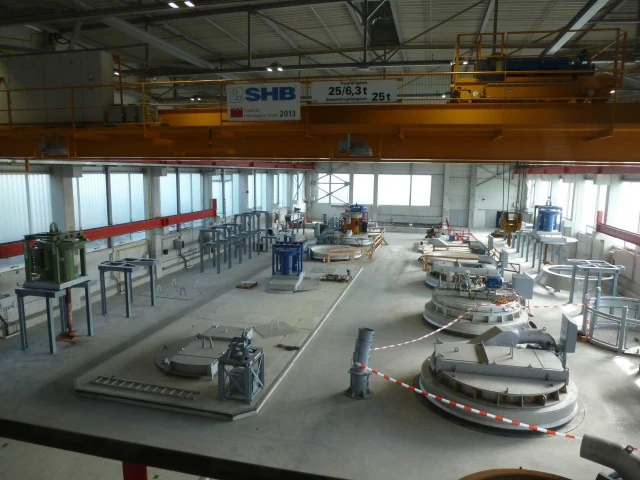
Ersatz der alten Bleiraffination. Verminderung diffuser Emissionen durch verbesserte Abläufe mit Lüftungskonzept um ca. 50%. Neubaukosten von ca. 20 Mio €.
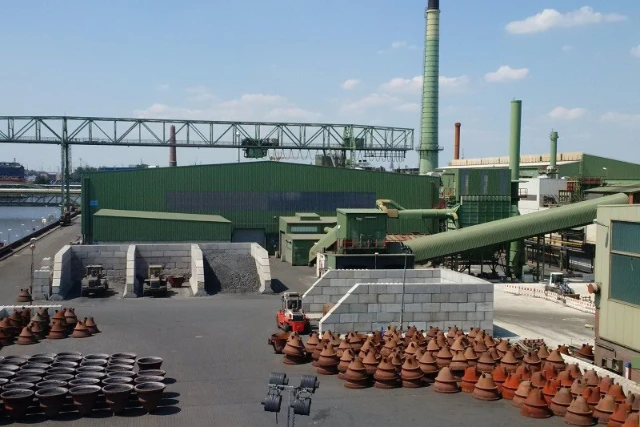
Errichtung einer Lagerhalle inklusive eines eingehausten und abgesaugten Brechers für schadstoffbelastete Schüttgüter im Werk Nord. Materialtransport erfolgt nun über ein vollständig geschlossenes System.
Neubau einer Filteranlage zur weiteren Verminderung diffuser Emissionen im Konverterbereich.
Inbetriebnahme zweier Waschtürme zur Entfernung von Fluoriden und anderen wasserlöslichen Inhaltsstoffen aus dem Abgas. Das Gas durchströmt die Türme dabei von unten im Gegenstrom zum Waschwasser.
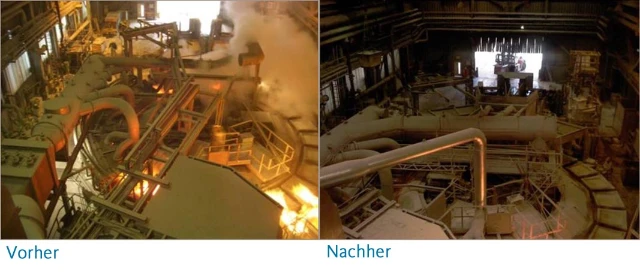
Neues Abgaserfassungssystem für Anodenofen und –gießmaschine bewirkt Emissionsminderung von mehr als 70% des Bereiches. Investition von mehr als 7 Mio €.
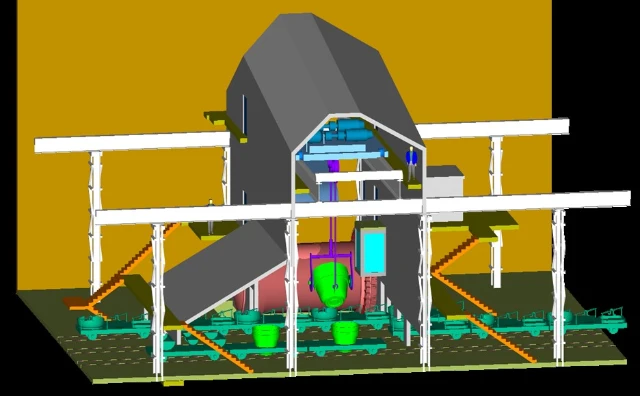
Einhausung und Absaugung des Pierce-Smith-Konverters der Rohhütte im Werk Nord zur Erfassung und Behandlung von SO2-haltigen Abgasen aus Chargiervorgängen innerhalb der Konverterhalle (Haus in Haus-Konzept). Überdachung des Konverter-Zwischenproduktplatzes zur Verminderung diffuser Staubemissionen.
Zertifikate Aurubis Hamburg
-
Um die heruntergeladene Komponente zu sehen den QR code scannen
ISO 9001: 2015
PDF
1 MB
-
Um die heruntergeladene Komponente zu sehen den QR code scannen
DIN EN ISO 9001 : 2015, Anlage
PDF
1 MB
-
Um die heruntergeladene Komponente zu sehen den QR code scannen
ISO 14001: 2015
PDF
1 MB
-
Um die heruntergeladene Komponente zu sehen den QR code scannen
DIN EN ISO 14001 : 2015, Anlage
PDF
1 MB
-
Um die heruntergeladene Komponente zu sehen den QR code scannen
ISO 45001: 2018
PDF
1 MB
-
Um die heruntergeladene Komponente zu sehen den QR code scannen
DIN EN ISO 45001 : 2018, Anlage
PDF
1 MB
-
Um die heruntergeladene Komponente zu sehen den QR code scannen
ISO 50001: 2018
PDF
1 MB
Information der Öffentlichkeit nach Störfallverordnung
Arne Schilling
Leitung Umweltschutz, Energie und Arbeitssicherheit Hamburg Betriebsbeauftragter für Gewässerschutz
| Telefon | +49 40 7883-3788 |